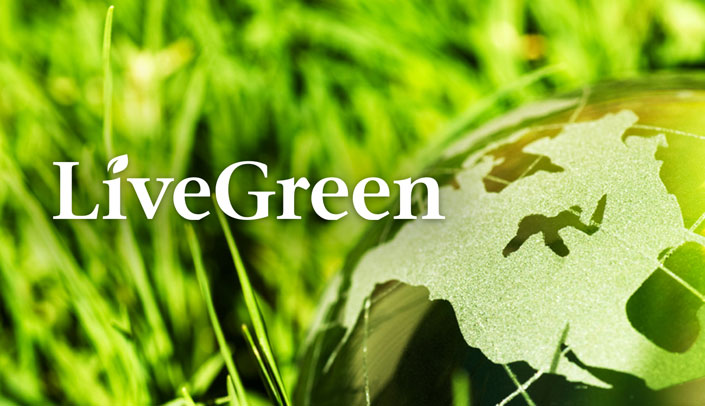“Enough is as good as a feast.” – Mary Poppins
We need to let go of the belief that we have unlimited resources and unlimited space to hide our garbage.
|
LIVEGREEN |
by Anne Rivas |
Sweden burns its trash to generate energy, and they’ve gotten so efficient at recycling, composting and burning their trash that they now import garbage from other countries.
Last week we talked about the eco footprint of the United States. This week, we’re going to talk about what we can do to shrink it.
Let’s look at city planning. With the past 100 years of cars and cheap fuel, we have developed cities with businesses clustered together and homes and schools clustered farther away. We need walkable neighborhoods with workplaces, desirable housing and good schools close to each other.
Some cities have efficient mass transit. Some cities don’t, because, as in Omaha, it’s easy to drive from one point to another in a fairly short time. A two-pronged approach — mass transit to move people between neighborhoods, and walkable neighborhoods that integrate workplaces, schools and housing — will help to reduce our city footprint. Omaha has made a good beginning with the recent approval of Complete Streets.
Let’s look at building codes. We can establish higher energy conservation standards and support passive solar and geothermal energy in new construction. We can invest in retro-fitting existing homes and businesses for greater efficiency. Some cities even provide help with gray water systems. Can we do that here?
We are extremely lucky to live in a farm state. I belong to a Community Supported Agriculture (CSA), and I have a big yard with lots of room for vegetables. But all summer I have bought spinach (in a plastic box) that was grown in California. Why aren’t I eating the locally-grown kale from my CSA? Well, I’m tired of kale and I really like spinach. I know that’s lame. Moreover, I like mangoes, bananas and avocadoes, none of which grow here.
I’m not saying we should only eat what we can grow ourselves. We need to be aware of the trade-offs we are making. We, too, can expand urban agriculture, shrinking some of the distance food travels (I see bunches of bananas carpooling with avocadoes. Road trip!)
With backyard and community gardens, urban farms, walkable neighborhoods and mass transit, our city footprint will shrink. It’s a start.


Had not yet heard of Complete Streets – thanks for this article.
I grew tired of the kale also.
This is a interresteing difference I also noticed when mowing here. You do not recycle much here in the US compared to us in Sweden. Let me give you an example from todays lunchseminar. 90 boxes are delivered from a caterer to the seminar. Quiete a big load. Each box contains a individually wrapped sandwich, a wrapped cockie, a napkin and fork and two plastic containers with sallad and fruitsallad. And a lot of air that takes space in the transport. In Sweden there would have bean 5 to 10 reusable trays with wrapped sandwiches since they where filled lunch sandwiches( Otherwise they would have been stacked as they are , ready to grab and eat). A pile of napkins and forks. Some baskets with fruit to pick as you like from, bananas, apples of course since it is fall and apples are at hand of many different varieties, maybe pears, citruses and if you want it fancy, grapes, Kiwis and some other more exotic fruits. When I left the auditorium, the trashbin was already overfilled with empty boxes, and noone more then me fold their box together to reduce the load of trash to be taken away. There are improvements to be done 🙂
On a trash day, I put my one half empty bag out. I see other houses with 3-5 bins out, bursting with cardboard, plastic bottles, glass container, wooden trash… It all starts at home. I have also wondered why we don't burn trash for energy. Good point to consider when voting next year.